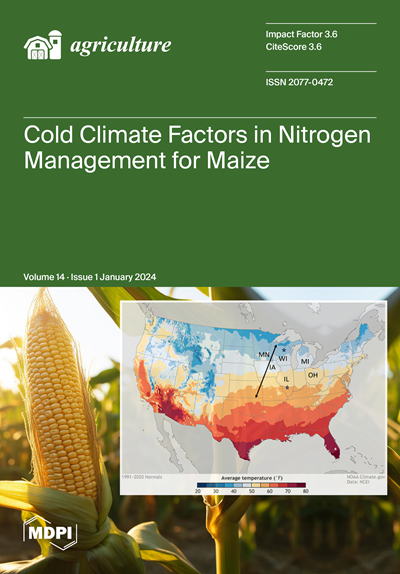濒危欧洲灌木2月达芙妮(Daphne mezereum L.)高效微繁方案及培养细菌鉴定
IF 3.6
2区 农林科学
Q1 AGRONOMY
引用次数: 0
摘要
麝香科达芙妮是一种天然存在于欧洲的药用灌木,在波兰受到法律保护。在本研究中,开发了一种2月达芙妮从结状外植体大量繁殖的方案。微繁技术是通过开发有效的繁殖方法,使珍稀珍贵植物得以保存的离体技术之一。在增殖阶段,外植体在含有不同细胞分裂素的木本植物培养基(Woody Plant Medium, WPM)中培养,在生根阶段,在含有珍珠岩的半固体WPM培养基上,使用不同浓度的吲哚-3-丁酸(IBA)。在含有4.14 μM topolin (mT)的培养基上,其增殖率最高(5个芽/外植体)。在不同浓度的IBA处理下,再生苗的根数和根长均以19.68 μM的IBA处理最高,分别为6.63根和2.15 cm。同样值得记住的是,植物经常被不同的微生物群定植,这也影响了生态系统的多样性。栖息在梅泽勒姆芽上的内生细菌是分枝杆菌。本文章由计算机程序翻译,如有差异,请以英文原文为准。
An Efficient Micropropagation Protocol for the Endangered European Shrub February Daphne (Daphne mezereum L.) and Identification of Bacteria in Culture
Daphne mezereum of the Thymelaeaceae family is a medicinal shrub occurring naturally in Europe and under legal protection in Poland. In the present study, a protocol developed for mass propagation of February daphne from nodal explants is presented. Micropropagation is one of the in vitro techniques that allow the preservation of rare and valuable plants by developing efficient methods for their propagation. In the proliferation stage, explants were cultured in the Woody Plant Medium (WPM) with different cytokinins, and in the rooting stage on the semi-solid WPM medium with perlite, indole-3-butyric acid (IBA) in various concentrations was used. The maximum proliferation rate (five shoots per explant) was observed on the medium containing 4.14 μM of meta-Topolin (mT). When the regenerated shoots were rooted in vitro in the presence of IBA in various concentrations, that of 19.68 μM induced the highest number of roots per shoot (6.63) and the maximal root length (2.15 cm). It is also worth remembering that plants are often colonized by different groups of microorganisms, which also affect the diversity of the ecosystem. The endophytic bacteria inhabiting the D. mezereum shoots are Mycobacterium.
求助全文
通过发布文献求助,成功后即可免费获取论文全文。
去求助
来源期刊

Agriculture-Basel
Agricultural and Biological Sciences-Food Science
CiteScore
4.90
自引率
13.90%
发文量
1793
审稿时长
11 weeks
期刊介绍:
Agriculture (ISSN 2077-0472) is an international and cross-disciplinary scholarly and scientific open access journal on the science of cultivating the soil, growing, harvesting crops, and raising livestock. We will aim to look at production, processing, marketing and use of foods, fibers, plants and animals. The journal Agriculturewill publish reviews, regular research papers, communications and short notes, and there is no restriction on the length of the papers. Our aim is to encourage scientists to publish their experimental and theoretical research in as much detail as possible. Full experimental and/or methodical details must be provided for research articles.
 求助内容:
求助内容: 应助结果提醒方式:
应助结果提醒方式:


